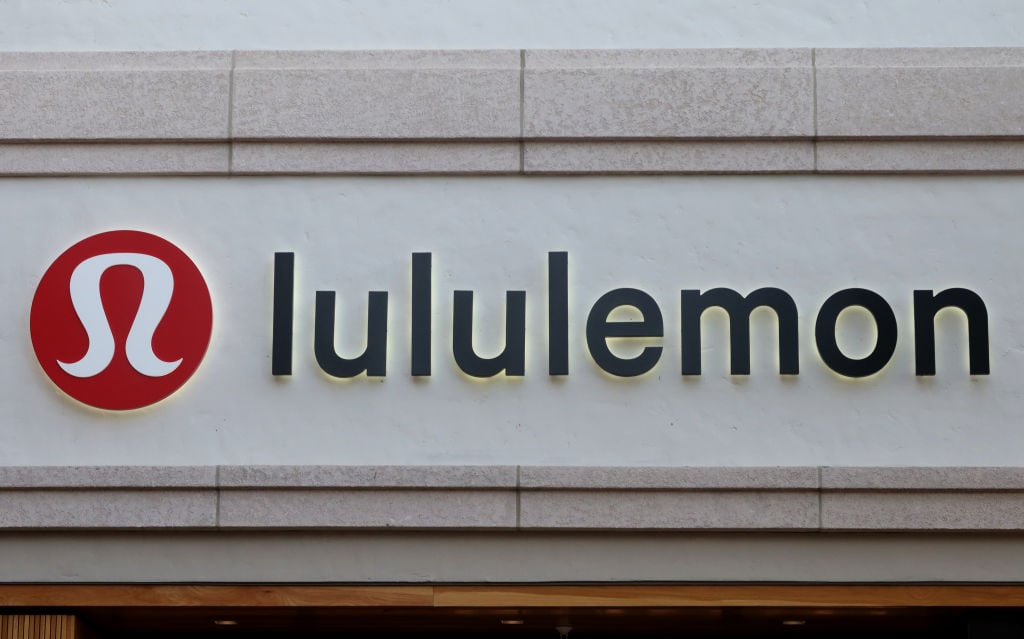The current tech-fueled bull market continues to draw attention on Wall Street. All the major indices have hit new highs recently, but most of the focus among investors is concentrated on companies benefiting from artificial intelligence. Meanwhile, valuations for companies in other sectors are looking attractive.
Some top brands in the consumer goods sector are starting to look interesting from a value perspective. Here are two stocks that have fallen out of favor on Wall Street but could see a rebound over the next few years.

Image source: Getty Images.
1. Lululemon Athletica
Shares of Lululemon Athletica (LULU 1.93%) have plummeted to new 52-week lows in the past month and are down by more than 60% from their peak, but there seems to be a growing discrepancy between the company's brand strength and its stock price. There are customers of the brand who swear by the product quality, and this is echoed in growing search interest on Google Trends. Wall Street obviously has cooled toward companies dependent on a cautious consumer, but Lululemon stock offers incredible value at under $200.
Lululemon has had an amazing growth story. Over the last 10 years, revenue and earnings grew at a compound annual rate of 19% and 24%, respectively. Those are impressive numbers for a company that must vie for market share with powerhouses like Nike and Adidas. They also show how much room there is in the athletic apparel industry for new brands to stand out with differentiated product designs.

NASDAQ: LULU
Key Data Points
Further, Lululemon's successes highlight how fragmented this part of the apparel industry is, and the opportunity for a rising tide to lift all boats. After five decades of growth, Nike is the largest brand, but it only reaps a minor portion of consumers' activewear spending. Overall, the athletic apparel market was worth $406 billion in 2024, according to Grand View Research, which expects it to grow at an annualized rate of 9% through 2030.
Lululemon reported a 7% year-over-year revenue increase in the first quarter, which is relatively strong considering the weak consumer spending backdrop across the apparel industry. It still has a lot of potential in international markets, which provide only a small portion of annual revenue now, and it continues to see strong customer responses to new releases. I believe it will grow sales much faster in a stronger economy.
The stock looks undervalued at a forward price-to-earnings ratio of 13. This might be a fair multiple for a company growing sales and earnings at low rates, but if Lululemon returns to double-digit percentage sales growth over the next year, the stock could rocket higher. Just returning to its previous peak of $516 would more than double an investment made at today's price.

Image source: Getty Images.
2. Roku
Roku (ROKU 2.63%) stock also has underperformed the past few years, which doesn't match the growth of its streaming platform. Its key product is a smart TV operating system that aggregates content from all the major streaming services, which is part of the value proposition for consumers who feel increasingly swamped by too many streaming options. While Apple TV is a top competitor, not everyone needs to be locked into the Apple ecosystem, especially at the premium prices the tech giant charges for its devices. Roku has a large and growing customer base thanks to its position as a budget-friendly alternative with an ad-supported revenue strategy.
The stock's current $84 price is well off the $490 high it reached during the pandemic. A slowing advertising market weighed on revenue growth, and the company is still recovering from that slump. However, management has made a lot of investments into ad technology and partnerships with third-party demand-side platforms like Amazon, and this strategy is paying off.

NASDAQ: ROKU
Key Data Points
Platform revenue, gross profit, and streaming hours all grew by double-digit percentages in the second quarter. Roku's active accounts consistently grew at double-digit rates over the past few years. Roku says it now serves over half of all U.S. broadband households. Overall, these users spent more than 35 billion hours watching content on Roku last quarter, up from 30 billion in the prior-year period.
Advertising dollars ultimately flow to where the viewers are, and this is why I think Roku stock could deliver strong returns from its currently depressed level. The growth rate in video advertising on its platform during Q2 was greater than the growth of the broader U.S. digital ad market, signaling that Roku is taking advantage of its opportunity to capture a greater amount of the ad spending that is shifting to digital media.
Management expressed optimism about Roku's prospects in 2026. It cited execution in monetization initiatives and pointed to improvements in its EBITDA (earnings before interest, taxes, depreciation, and amortization) margins. Adjusted EBITDA grew 79% year over year in Q2, with trailing-12-month free cash flow up 23%, and the company expects further margin expansion next year.
Wall Street is not too hot on the stock due to Roku's history of weak profitability. The company needs to prove it can profitably benefit from growth in digital advertising, but that is the outlook management is offering for 2026. Assuming the company succeeds in improving margins, the stock should move higher over the next 18 months or so.





